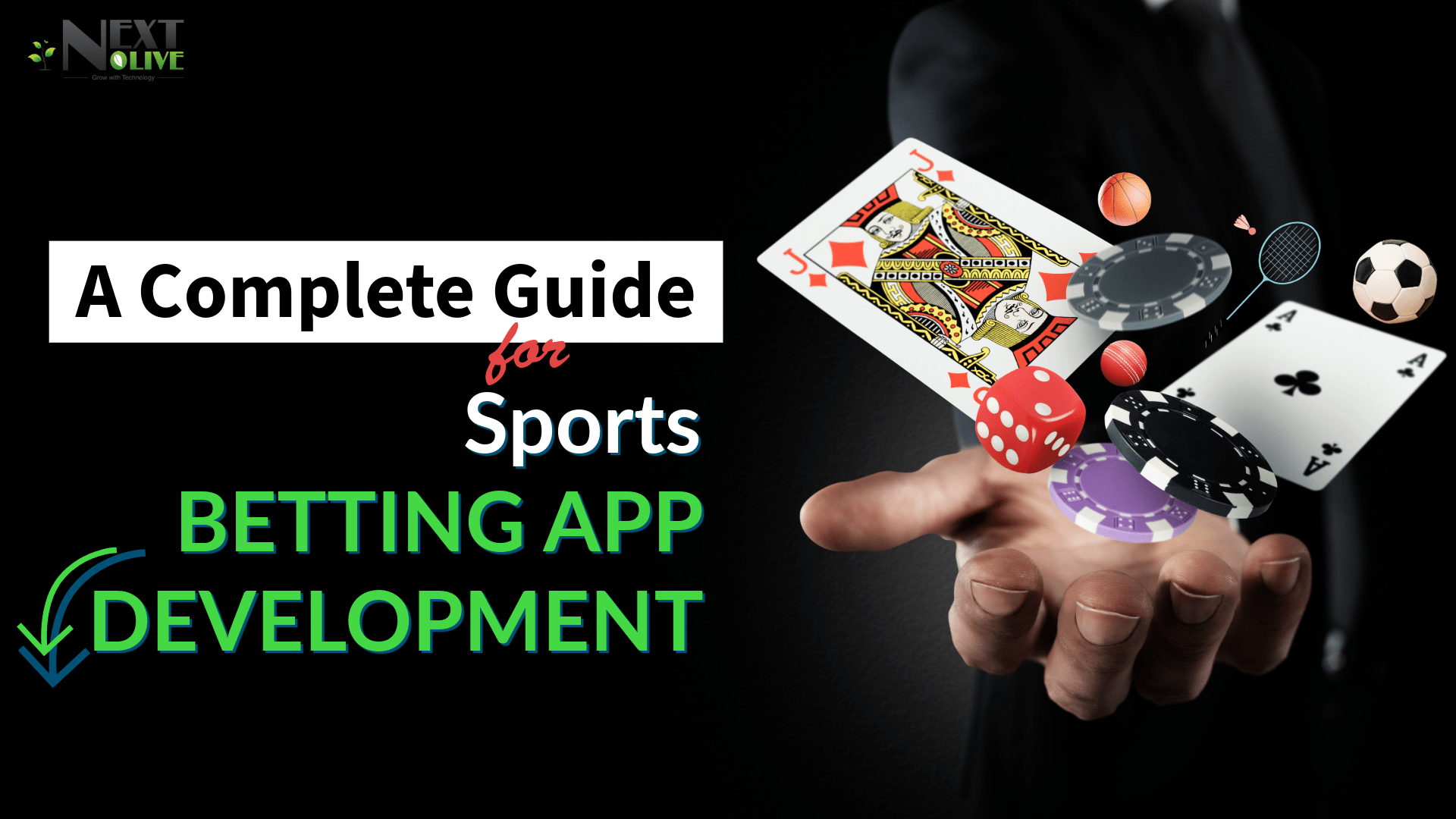Education App Development: Features, Cost, and Process
In 2025, the landscape of education is changing in ways more dramatic than can be imagined. Technology is already structuring this revolution in delivering and absorbing knowledge. Educational apps have emerged as the toolbox for transformation between older traditional learning and digital trends. These aren’t just programming jobs for developers; they involve creating an immersive, user-friendly experience that caters to different learning needs and styles. This guide goes into the core of educational app development, showing key trends, practical strategies, and cutting-edge technologies that can help you design impactful and engaging apps to stand out in today’s competitive market. Whether building for students, educators, or lifelong learners, this guide will give you the insights you need to succeed.
Table of Contents
ToggleWhat is an Education App Development?
An educational app is a digital platform designed to make access to learning easier, much more fun, and tailored to the users’ needs and age. The platform is used to offer interactive lesson plans, quizzes, games, and multimedia for easy understanding and exploration of various concepts. Unlike traditional teaching tools, educational apps are usually flexible in that they allow any user access to them when they feel ready or at their own pace. They serve various purposes, from developing foundational skills in young children to giving professional certifications to adults. Through convenience and innovative teaching methods, educational apps have become a part of the present learning landscape.
The Role of Education App Development
Going well beyond the basic creation of a digital tool, education app development is about fundamentally changing how access to knowledge can be achieved within a technologically advanced world. The apps create a bridge through which learners across different locations and backgrounds can attain quality education in the most trying of circumstances. Providing tailored learning experiences, real-time feedback, and engaging content enables users to assume a greater role in their learning paths. For educators, it offers innovative means of teaching and tracking progress for a more efficient and interactive process of learning. In a time where lifelong learning is the buzzword, the role of app development plays a pivotal role in making education more inclusive, adaptable, and aligned with the demands of modern times. Educational apps are not only useful in the study but also make you a skilled person at your own pace. Nowadays the term “Distance Learning” is booming in the Ed-tech industry. You can find these apps as mobile apps, websites, desktop programs, and other online solutions. The impact of these apps goes beyond just teaching; they allow you to create customized learning experiences for both students and teachers, changing how we learn.
Types of Education Applications
[1] Learning Management System (LMS)
Learning Management Systems, or LMS, are complete platforms designed to deliver, track, and manage educational courses and training programs. They provide educators with tools for creating interactive lessons, monitoring student progress, and facilitating communication. LMS solutions are popular in schools and workplaces alike, helping to create flexible and organized learning environments.
[2] Language Learning Apps
Language learning apps teach new languages through interactive methods, such as gamification, audio exercises, and personalized lessons. These apps accommodate different learners who can enhance their speaking, reading, and writing skills at their own pace. Examples include Duolingo and Rosetta Stone.
[3] E-Books and Digital Library Apps
E-books and digital library applications provide instant access to large collections of books, journals, and academic resources. These platforms include Kindle and OverDrive, and they make reading more accessible and customizable with adjustable text size and integrated dictionaries.
[4] Online Course Apps
The online course apps provide an extensive variety of courses, both for industry professionals and academics. Apps like Coursera and Udemy offer learners the chance to learn new skills, obtain certification, or just explore a topic of interest in a low-cost and flexible manner.
[5] Classroom Management Apps
Classroom management applications simplify administrative tasks and improve teacher-to-student communication. These tools help teachers to track attendance, assign homework, and share announcements. They easily make learning environments more organized and productive for the teachers and their students.
[6] Tutoring and Homework Apps
Tutoring and homework apps allow for personalized support to students requiring additional assistance outside the classroom in a specific subject. Such apps can make out-of-class learning more effective and convenient with instant problem-solving and on-demand tutoring.
[7] STEM Education Apps
STEM education apps create interest and develop skills in science, technology, engineering, and math. Such apps mostly use interactive simulations, coding exercises, and problem-solving activities to make complex concepts fun and engaging. They aid learning and prepare for future innovation.
[8] Flashcards and Study Apps
Flashcards and study apps make memorization easier through interactive, customizable cards. They use spaced repetition algorithms to improve retention and recall efficiency. These apps are perfect for test preparation, as they make learning smarter and more effective for people of all ages.
[9] Early Childhood Education Apps
Early childhood education apps are aimed at developing foundational skills in young children through playful learning. They use bright colors, exciting stories, and interesting games to help children learn things like numbers, letters, and social skills with fun.
[10] Specialized Learning Apps
Specialized learning apps focus on niche areas, like music theory, art techniques, or professional skills. They are usually designed to cater to a specific audience, with expert-guided tutorials and practical exercises. These apps target learners who need in-depth knowledge in unique disciplines.
Education App Development | Why is it required?
Our informative blog will guide you step-by-step procedure to create a learning app. Stay tuned to know all the tech and non-tech aspects of the E-learning app. Whether you’re seeking details about types of educational apps or you’re looking for insights on how to build one for iOS or Android, go to elaborate education software development services. We’ll also talk about the development process and that will make you a bit of a Geek.
Features needed to be embedded to build an Educational App
[1] Core Features
User-Friendly Interface: A clear and intuitive layout allows students of any age to easily use the application. This helps reduce distractions so that learning becomes smooth and continuous from the first use.
Personalized Learning Paths: Adaptive curricula are aligned to the needs of each learner, ensuring that users progress at their own pace while addressing specific strengths and weaknesses.
Interactive Content: Multimedia like quizzes, simulations, and videos make lessons more engaging, hence better understood and retained.
Progress Tracking: Analytics are detailed to enable users to track their achievements, identify areas for improvement, and set realistic learning goals.
Offline Access: Downloadable content enables students to learn uninterrupted even in areas with limited internet connectivity.
[2] Advanced Features
Live Classes and Webinars: Real-time virtual sessions bridge the gap between learners and educators, fostering a collaborative learning environment.
Social Learning: The students can discuss anything related to their queries in the forums, which facilitates teamwork and further learning.
Gamification: Incorporating features of a game like badges, leaderboards, and challenges makes learning enjoyable and motivates the users to reach specific milestones.
AI and Adaptive Learning: The algorithms analyze user behavior and provide tailored content, thereby ensuring that the learning process is efficient and impactful.
Multimedia Content: The use of videos, animations, and audio helps reach out to varied learning styles to make difficult subjects easier to learn.
[3] Administrative Features
Teacher/Parent Dashboard: A central place allows teachers and parents to monitor the progress of students, assign tasks, and intervene at the right time.
In-App Messaging: Direct communication between users, teachers, and parents promotes collaboration and reduces doubts immediately.
Assessment and Feedback: Quiz and assignment tools are in-built provide instant feedback to the learners so that they can work on their understanding.
[4] Security and Compliance
Data Privacy: Adherence to strict privacy policies ensures that user data is kept safe and, therefore, trusted by both the student and the guardian.
Content Moderation: All materials are strictly reviewed to uphold a safe, age-appropriate, and educative environment for learners.
Cost to Develop Education App
[1] App Complexity
- Simple Apps: Simple apps with minimal features, such as quiz-based apps or flashcard tools, tend to be more affordable. Basic features include the following: User registration Content delivery Basic analytics.
- Moderate Complexity: It includes applications that have real-time chat, interactive content, gamification elements, or AI-based personalization. They require a lot more time and resources.
- Highly Complex Apps: These are advanced apps that require the integration of AR/VR experiences, AI tutors, multi-language support, and custom analytics dashboards. Such apps are very expensive because they require highly specialized expertise.
[2] Development Team Location
- In regions like North America or Europe, the cost of hiring developers is normally higher due to higher hourly rates, ranging between $80 to $200 per hour.
- The cost-effective rates for developers in Asia (for example, India and the Philippines) or Eastern Europe can average between $20 to $80 per hour, without sacrificing quality.
[3] Platform Selection
- Native Apps: Developing apps for a specific platform (iOS or Android) means writing different codebases, which are more expensive.
- Cross-Platform Apps: The use of frameworks such as Flutter or React Native will reduce development time and cost for Developing Mobile Apps in 2025 since a single codebase can be shared across multiple platforms.
[4] Features and Functionalities
Basic Features: Any educational app is expected to support user authentication, course modules, tracking of progress, and push notifications.
Advanced Features: These features include live classes, in-app purchases, gamification, AR/VR capabilities, and AI-based adaptive learning that increase the development costs. Every additional feature will cost about $1,000 to $15,000 according to its complexity.
[5] Design and User Interface
A sleek and intuitive design is essential for user engagement. Custom designs cost more than using pre-built templates. Expect to allocate 10-20% of your total budget to design.
[6] Backend
A strong backend ensures smooth functionality. Cloud solutions, such as AWS or Firebase, and scalable databases increase costs but are necessary for reliability. Depending on scalability and complexity, backend development can cost anything between $5,000 to $50,000.
[7] Third-Party Integrations
Integration with payment gateways, video conferencing tools, analytics platforms, and APIs for language support adds additional costs.
[8] Estimated Costs Based on App Type
- Basic Educational App: $5,000 to $30,000
Examples: Flashcard apps, and quiz tools.
- Moderate Educational App: $30,000 to $100,000
Example: Learning management systems (LMS), and apps with gamification.
- Advanced Educational App: $100,000 to $300,000+
Example: Apps with AR/VR, AI personalization, or complex analytics.
[9] Additional Costs to Consider
- Maintenance and Upgrades: $5,000 to $15,000 per year.
- Server and Hosting Fees: $500 to $5,000 monthly, depending on user base.
- Marketing and User Acquisition: Cost ranges are highly variable, but can begin at $5,000/month.
- Customer Support: This can be between $2,000 and $10,000 per month depending on your user base.
How To Create an Educational App?
[1] Concept and Planning
The core foundation of a successful educational app lies in its definition and detailed planning. The developer identifies the target audience, determines what is to be learned, and brainstorms features that would suit the educational objectives. This also forms a phase where one does market research and devises a roadmap to fulfill the needs in specific areas.
[2] Design
An intuitive and engaging design is essential to capturing the attention of users. The emphasis is on making the interface user-friendly, with accessible navigation, visually appealing layouts, and interactive elements. Accessibility is also emphasized by designers to reach diverse learners, as the app needs to be responsive to different needs and preferences.
[3] Development
At this development stage, design ideas are translated into actual code. At this stage, the developers must determine the suitable technology stack to deploy a productive application with less performance lag. Core features will include quizzes, tracking of progress, and gamification elements, integrated and optimized on the app across different devices and platforms.
[4] Content Creation
Quality content remains the heart of any educational application. Subject matter experts and instructional designers collaborate to develop engaging, accurate, and age-appropriate material. A lot of content is enriched with multimedia elements like videos, animations, and interactive exercises to make it dynamic and more enjoyable.
[5] Testing and QA
Thorough testing guarantees the reliability of the app and user satisfaction. QA teams assess functionality, usability, and performance under various conditions. Beta testing with real users gives valuable feedback for further refinement of the app before launch.
[6] Launch and Deployment
An educational app requires strategic marketing and deployment in app stores. Developers can make buzz by creating awareness on social media, sending out press releases, and forming alliances with educators. They will also be clear with instructions and support for easy adaptation by the user about features and benefits.
[7] Post-Launch and Maintenance
Continuous updates and maintenance are critical for the application to stay fresh and functional. The developers deal with the concerns of users by solving bugs, providing new features, and offering the best possible learning experience. In addition, it maintains the app compatible with newer devices and OS versions.
How To Choose Tech-Stack in Educational App Development?
The right tech stack and tools are an ingredient to preparing a successful roadmap of an educational app. The choices you make affect how well the app can grow, how easy it is to keep up with, how fast it gets built, and how much it costs. We’ll look at different ways and technologies for developing mobile apps to help you create great educational apps.
[1] Hybrid App Development
Hybrid app development shows flexibility, performance, and seamless user experience across all OS platforms. These capabilities make it a top choice for Flutter developers looking to deliver high-quality mobile applications. Although It provides 24*7 community help but offers limited platforms. Plus, hybrid apps can still use important features like cameras and GPS, which can make learning more interactive and fun.
[2] Native App Development
Native Apps come with simple hardware embedding and library support that feels like Real. Native App development involves the use of platform-specific tools and language. It also depends on the operating system like iOS requires a MAC. For Android users, developers should know Java or Kotlin and use Android Studio. These apps run faster. The worst part is that it involves hidden costs. Also, the following is the overall tech stack required to develop a full-fledged educational app:
[1] Frontend Development
HTML, CSS, JavaScript, React.js, Angular, and Vue.js
[2] Backend Development
Languages such as Node.js, Python (Django, Flask), Ruby (Ruby on Rails), Java (Spring), PHP (Laravel), MySQL, PostgreSQL, MongoDB, and Firebase for data storage and retrieval, RESTful APIs, and GraphQL for communication between the frontend and backend.
[3] Mobile Development
- iOS: Swift or Objective-C.
- Android: Kotlin or Java.
[4] Cross-Platform: React Native, Flutter, Xamarin
[5] Cloud Services
- Hosting & Storage: AWS, Google Cloud Platform, and Azure for deploying and managing the app infrastructure.
- CDN: Content Delivery Networks like Cloudflare or AWS CloudFront for faster content delivery.
[6] Authentication & Security
- OAuth: For secure user authentication.
- SSL/TLS: For encrypting data transmissions.
- Security tools: OWASP, JWT (JSON Web Tokens) for secure sessions.
[7] Analytics & Monitoring
- Analytics tools: Google Analytics, and Mixpanel for tracking user behavior.
- Error Monitoring: Sentry, New Relic for real-time error tracking and fixing.
[8] Communication Tools
- Real-Time Communication: WebSockets, Firebase Realtime Database for instant updates.
- Push Notifications: Firebase Cloud Messaging, OneSignal
[9] DevOps & Version Control
- Version Control: Git, GitHub, and GitLab
- CI/CD: Jenkins, CircleCI, Travis CI
[10] Design Tools
Adobe XD, Figma, and Sketch for designing user interfaces and experiences.
How to choose the best educational app development company?
Choosing the right educational app development company entails serious deliberation over several critical factors for the success of your project. A good track record, expertise, and customer-centric approach are essential traits to look for. Next Olive Technologies stands out as one of the leading names in this space, boasting over 12 years of industry experience. With a team of over 150 skilled educational app developers, they have been able to deliver innovative 50+ educational apps across more than 20+ countries including UK, USA, South Korea, and Israel. Their reputation is built on offering cost-effective solutions without quality compromise, ensuring timely delivery as per specific client requirements. Prioritizing a customer-centric approach, Next Olive Technologies has excelled at understanding unique needs and translating them into practical, user-friendly, and impactful educational apps, thereby becoming a trusted partner for businesses and institutions in the pursuit of revolutionizing learning experiences.
Conclusion
In conclusion, the journey of developing an educational app is as much about understanding the learners as it is about the technology. It is a process that requires creativity, pedagogy, and innovation together, culminating in a tool that can reshape how knowledge is consumed and shared. By balancing functionality with user-centric design, developers create experiences that not only educate but inspire. There was a gamification of quizzes as well as instantaneous feedback on nearly every feature combination that bridged curiosity and understanding. An educational application is not software but a spark for learning; a guide to growth; and proof of the ultimate potential of the technology combined with human skills.





